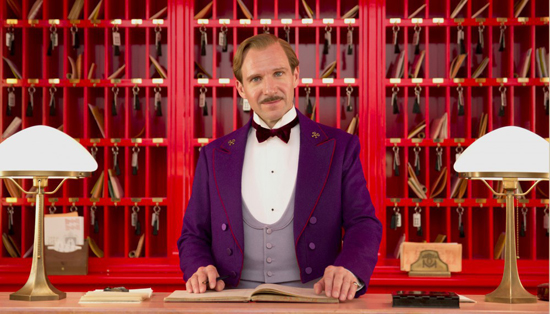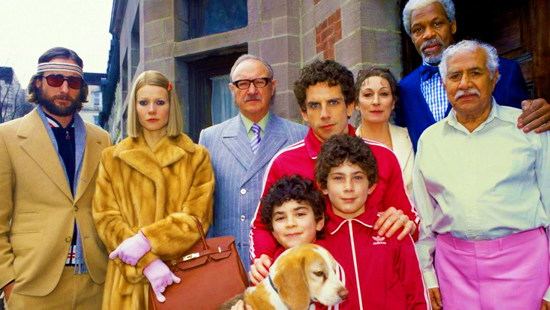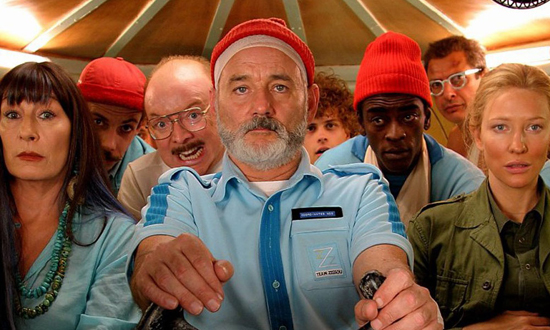
Every new generation of filmmakers that comes onto the world stage usually has to try very hard from the get go to define themselves in the ever competitive world of showbiz. And with each new generation you have many different types who approach the art of film from a different standpoint. Sometimes you get the workman style, adapt to the business kind of filmmaker that doesn’t so much create a definitive signature style of their own, but manages to find consistent work in Hollywood because of their ability to conform. And then you have the independent minded, flashy styled filmmaker who absolutely want to leave their own mark on cinema. These are the kinds of filmmakers who create a brand around themselves and turn every film they make into a personal statement of their own unique vision. Unfortunately for many of these filmmakers, they are usually unable to sustain long careers in Hollywood, because by focusing too much on style over substance they often fall into self-parody and audiences eventually grow tired of their overt attempts at gaining attention. But, those who do manage to sustain an extensive career while also staying true to their artistic style often become some of the most beloved filmmakers of all time. One such filmmaker who has managed to achieve that in recent years is Wes Anderson. Anderson falls into that rare category of filmmaker whose body of work is unmistakably his own. One only has to look at a single frame of each film and they will immediately recognize it as an Anderson picture. And even more remarkable than finding that unique style is the fact that he’s managed to sustain a prosperous career without ever having to compromise his vision. Sure, his films are not box office bonanzas, but they do find their audience and each one has over the years has achieved almost cult status.
Born and raised in Houston, Texas, Wes Anderson found his film-making voice in quirky comedies that often centered around absurd characters. Most of his early work were collaborative in nature, involving many of the same crew, as well as the help of his writing partner Owen Wilson, his friend and classmate whom he first met at the University of Texas. But, as Anderson and Wilson’s careers took different paths in later years, with Wilson pursuing his acting career more fervently, you would also see a shift in Anderson’s directing style as well. His movies became less grounded and often ventured into more surrealism. Some would say that his movies are almost like modern fairy tales, which is a statement that I don’t think he would shy away from. He clearly is no longer trying to make his movies feel natural anymore, although he still gives each of his movies their own sense of logic that helps to ground them just enough to feel real. In many ways, it’s the confidence that he brings to his own cinematic voice that has earned him the respect of audiences and the industry alike. Few directors can move from movie to movie like he does without repeating themselves and still remain true to their style. Though he has worked exclusively in comedy throughout his career, his movies all place his humor in different worlds and situations making them feel fresh. He has taken his style around the world into different cultures, different points of view, and has even made it work in the medium of animation. How many filmmakers do you know who can make an animated movie still feel exactly like one of their live action films? Like other directors in this series, I’ll be looking at the main things that define Wes Anderson’s movies the most and how they have contributed to the unparalleled body of work that bears his personal stamp and has turned him into a force within the world of cinema.
1.

SYMMETRICAL FRAMING
The first thing that will come to mind when the name Wes Anderson is brought up is the way that his movies look. His visual style is unmistakable, though not unusual. What you’ll find in every movie of his is deliberate staging to emphasize the symetricality of the shot. This usually involves the focus of the shot being center frame, with the mise en scene of the setting drawing the eye directly to it, whether it be an actor or a prop. Anderson also employs the technique of “planimetric staging,” where the camera is placed at a 90 degree angle with the subject of the shot. This is an age old framing style that has been used by the likes of Buster Keaton, Jean-Luc Godard, and Stanley Kubrick over many films, but none of those directors relied on it as heavily as Anderson. Wes Anderson almost exclusively uses this style of staging in every shot, which is what gives his movies that unique look. It’s best utilized with interiors, like in the house from The Royal Tenenbaums (2001), or the titular hotel from The Grand Budapest Hotel (2014), where the symmetrical framing emphasizes the boxed in quality of those environments. One could say that Anderson’s reliance on this technique is part of his way of emphasizing the storybook style of his narratives, like every frame is picture from a storybook or comic. It’s an idea that seems intentional on the director’s part, as one of his reoccurring motifs in his movies is showing overhead shots of book covers on a flat surface. The planimetric staging also changes the way action works in his movies, as his camera never tilt, but rather pans across, almost perpendicular to where the shot started, something that was very noticeable in the shifts from subject to subject in Moonrise Kingdom (2012). Though this style runs the risk of devolving into self-parody, Anderson has managed to make it work for himself and it’s something that endears himself to the audiences who appreciate his work.
2.

CARTOON LOGIC
Apart from the look of his movies, there is one stylistic choice that also sets his movies apart, which is the often hyper-realism that his movies exist within. Though on the surface his movies do look earthbound, they sometimes take leaps of logic that seem to defy explanation. Some would call this cartoon logic, which is where physics and reality are bent just slightly in order to achieve the right punchline for a gag, visual or otherwise. This is normal in the world of animation, where logic is limited only to one’s imagination, but in live action, it becomes a lot trickier, because there are some things that just have to make sense in the long run. Sometimes Anderson manages to work around the laws of physics in order to achieve the right punchline by showing us the aftermath of some incredible event, rather than the event in full. Some examples include how Owen Wilson’s character from The Royal Tenenbaums managed to be flung out of a car and into the third floor of the Tenenbaum house without a scratch on him. We never see the crash itself; only the sound of it followed by the sights of Wilson’s character reeling from the flight he took as well as the wrecked car itself, and what remains of the poor dog who got in it’s way. Moonrise Kingdom is also full of seemingly ridiculous sight gags that wouldn’t work in the real world but completely make sense in these movies, like the climatic image of Bruce Willis holding tight to the two young protagonists while dangling from the wreckage of a broken church steeple. It only made sense that Anderson would eventually be drawn to animation as a medium, where these absurd visual punchlines feel more at home, which he has now done twice with Fantastic Mr. Fox (2009) and Isle of Dogs (2018). But even in animation, his films still retain the same cartoon logic, which he has managed to make work in live action as well. It’s something that helps to make all of his movies not only visually interesting, but consistently funny as well.
3.

FAMILY UNITS
One reoccurring theme that Wes Anderson always returns to in his movies is the cohesiveness of family. Nearly all of his movies in one way or another address the internal issues that each family faces. The most obvious example would be The Royal Tenenbaums, which is exclusively centered around the trials and tribulations of a broken family. In that film, you see how actions taken by different generations cause ripples on those who come after, and how it often leads to misunderstanding and oftentimes complete withdraw. And yet, Anderson’s movies always stress the importance of family in each of our lives. Primarily, Anderson’s films examine the role of the father figure more than anything else. In every movie, the primary protagonist is either a father who’s trying to prove his worth to his family who feel estranged from him, or is a young lost soul trying to find guidance from a surrogate father who takes them under his wing. The former is best represented in characters like Gene Hackman’s Royal Tenenbaum and George Clooney’s Mr. Fox. Both men are forced to realize that years of selfishness has alienated themselves from loved ones, and they only find their true happiness in learning that it’s better to be involved as part of a family rather than an island to oneself. The latter is best illustrated through the relationships seen in Rushmore (1998) and The Grand Budapest Hotel. Ralph Fiennes’ M. Gustave in particular perfectly encapsulates the idea of an Anderson father figure, because he’s this force of nature who inspires loyalty from his young ingenue, lobby boy Zero (Tony Revolori) even when it takes both of them down some very self-destructive paths. Though father figures are an important aspect of his movies, Anderson does leave room for other dynamics, like in The Darjeeling Limited (2007), where three brothers (played by Owen Wilson, Adrian Brody, and Jason Schwartzman) make a journey to confront the mother who abandoned them (played by Angelica Huston). No matter which avenue he takes, this theme of family is an important one in Anderson’s movies, because it’s usually the thing that makes them relatable to most people.
4.

BILL MURRAY
Though not an essential part of Wes Anderson’s entire filmography, one thing that does tie most of Anderson’s films together is the presence of famed comedian and actor Bill Murray. Murray has appeared in every single Wes Anderson movie since Rushmore, the director’s second feature. Since his critically acclaimed performance as the alcoholic deadbeat Herman Blume in that feature, Murray has become something of a good luck charm for Anderson. Though Murray does have an appearance in all of Anderson’s movies, and even lends his voice to both of the director’s animated features, he doesn’t always take the spotlight. Sometimes he’s just another face in a large ensemble of great actors, like in The Royal Tenenbaums and The Grand Budapest Hotel, or even just makes the briefest of cameos, like he did in the opening of The Darjeeling Limited. But, when Anderson wants to spotlight Bill Murray in something, it’s usually going to be something special. Perhaps the greatest of his roles in these movies would be as the famed nautical filmmaker Steve Zissou in The Life Aquatic (2004). Zissou is a character tailor made for the hilariously deadpan actor, and much of the film’s best humor comes from Murray’s perfect ability to remain straight-faced through all the absurdity in the film. Though it’s interesting that the movie that spotlighted Murray the most in Anderson’s filmography is also the one that strained their relationship the most, as the grueling shoot caused a rift between the two. They have since reconciled their differences, but Murray’s chosen since then to take a more supporting role in Anderson’s work. Even still, for many Wes Anderson fans, it’s still a treat to see where Bill Murray shows up, since he’s become such a beloved part of these movies as a whole. Hopefully, it’s a working relationship that continues on much longer.
5.

NOSTALGIC SOUNDTRACKS
The one other thing that usually defines Wes Anderson’s films is their use of music. Anderson usually underscores his movies with a collection of classic tunes rather than original orchestral scores, although that’s changed in more recent years with Fantastic Mr. Fox, Moonrise Kingdom, and Grand Budapest Hotel all being scored by Alexandre Desplat (the latter which won an Oscar). But everything before Mr. Fox usually lacked any definable score, and instead used a playlist of songs ranging from Bob Dylan to the Beatles to the Kinks. But more often, his soundtracks would favor the sounds of indie folk singers who are largely unknown. More than anything, the choices in music are meant to evoke a sense of nostalgia, helping his movies to retain a sense of a time gone by, even if it’s set close to the present. They emotionally underline the mood of the story, and also help to give the movie character as well. Even in his fully scored features, Anderson still samples some classic tunes in sometimes funny ways. Fantastic Mr. Fox has a scene that features the love theme from Disney’s Robin Hood, which is a funny reference because in that film the legendary hero is played by, of all things, a fox. Anderson also recalls cinematic inspirations in some of his culturally specific movies. In The Darjeeling Limited, you hear select pieces from the films of legendary Indian filmmaker Satyajit Ray, as well as the opening theme from Merchant Ivory’s Bombay Talkie (1970), and more recently in Isle of Dogs, the main theme from Akira Kurosawa’s Seven Samurai is used in one scene. The Life Aquatic also played on Anderson’s penchant for nostalgic tunes by using the works of David Bowie, but instead had them performed by musician Seu Jorge entirely in Portuguese within the movie itself. It shows that Anderson not only uses music to give his movies a nostalgic flavor, but to also be playful with the choices, especially if you have a keen ear and can recognize the references that he’s purposely pointing us to. For him, the music is not just there to drive the story, but to also enhance the experience overall and reinforce the idea that movies can have a playful side as well.
Wes Anderson’s style makes him something rare in Hollywood, which is a true original. Nobody else makes movies the same way that he does, and few if any even attempt to. To be so unique an artist in this day and age is a real talent, since this is an industry that usually favors safe and universal voices behind the camera. It’s clear that Wes Anderson is not to everyone’s taste, and he does have his few detractors, but his movies still are true to their own self and that has earned him a strong following over the years. His signature framing style is certainly what makes him stand out the most, since no one else has the same eye for composition that he does. In an age where most filmmakers want to broaden the scope of their image to show all the possible dimensions, Anderson embraces flatness and makes it look beautiful. That storybook style of imagery also translates well into his often cartoonish brand of comedy. Most often the thing that I find most endearing about his movies is the fact that they embrace their absurdity and willfully lean into it. It’s because of the confidence that Anderson approaches his humor that we are able to suspend our disbelief and appreciate that not every joke makes logical sense. But, despite the flights of fancy, Anderson still finds stability in creating identifiable human stories within them, most often centered around family. And it’s in his larger than life characters like Royal Tenenbaum, Steve Zissou, Mr. Fox, and M. Gustave that we see Wes Anderson at his most inspired. These characters are what ultimately helps to give Anderson’s films the beloved status that they have enjoyed. And considering the fact that Wes Anderson is still relatively young as established filmmakers go, we should continue to expect to see even more interesting stories and characters from him for many more years to come. He may evolve as a filmmaker in that time, but one hopes that he’ll remain true to his own style, because no one else is capable of replicating it.